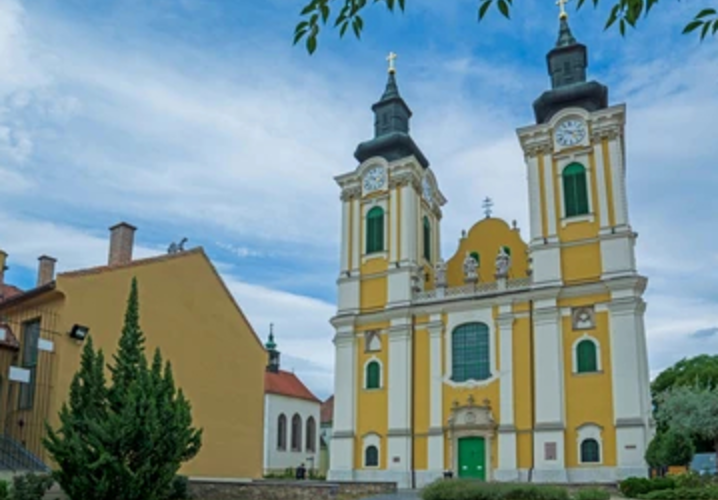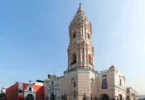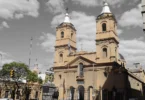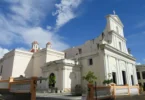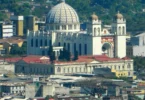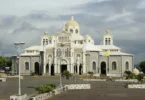Introduction
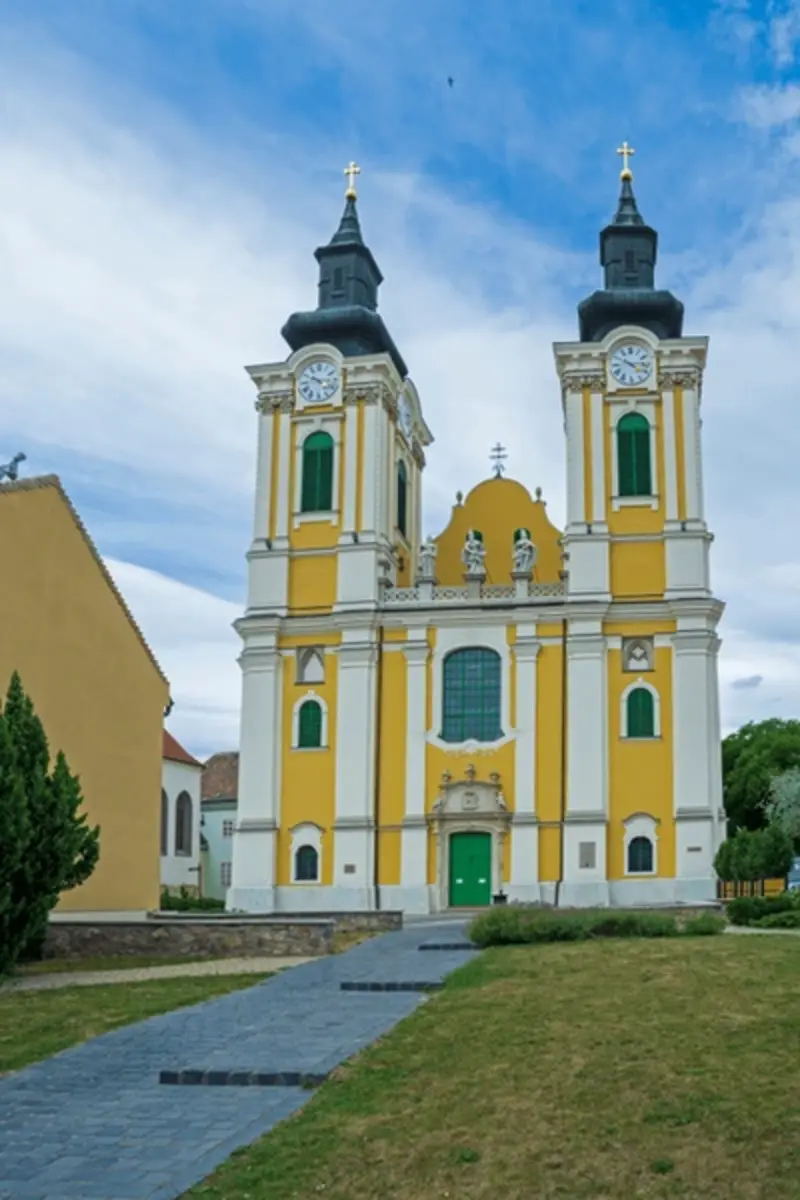
St. Stephen’s Cathedral in Székesfehérvár, also referred to as St. Stephen’s Basilica, the downtown parish church, or the King’s Parish Church is the main church in the city and a big historical landmark. Not only is it significant for Székesfehérvár, but it is also one of Hungary’s most important cathedrals. Since Béla IV was crowned here in 1235, it is also one of Hungary’s coronation churches. In the same location, there was previously a church built in the Byzantine style. The older church was where Prince Géza was buried, according to old records and a man named Jan Dugosz. It was also where Béla IV’s coronation happened. The church was rebuilt and expanded over time. They added a Gothic-style sanctuary after tearing down a portion of it in the 14th century. Then in the early 1400s, they completely replaced the old church with a new one that had three aisles and two towers the same towers that are still standing today, though now they look Baroque. During the Ottoman era, the church was actually turned into a mosque. It underwent significant change later, from 1743 to 1771, to become what it is today. The rebuilding was funded by Empress Maria Theresa, and in 1777, she made it official by establishing a bishopric there. The entire church, with the exception of the towers, was demolished to make way for a new sanctuary and building in the Baroque style. Thanks to Pope Pius XI, the church has been known as a basilica since 1938. Additionally, if you ever find yourself in the area, pay a visit to the northwest tower, where there is a small clock museum that houses clock mechanisms from a few hundred years ago.
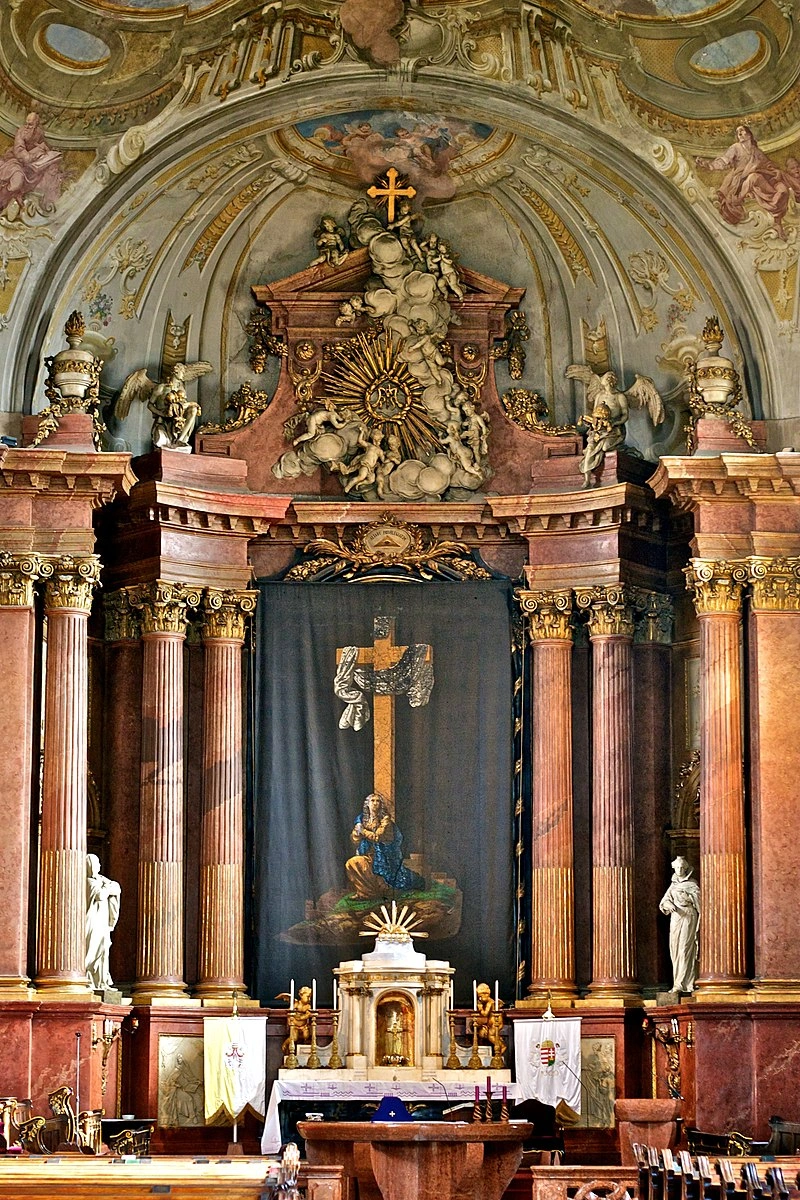
The basilica is built on ancient, sacred land. Grand Duke Géza, who ruled Hungary from 972 to 997, established the city of Székesfehérvár and is reputed to have constructed both his royal palace and a church exactly where the cathedral now stands. Interestingly, however, no Géza-era tomb has ever been discovered there. It is believed that this early church, which had four aisles and was constructed in the Byzantine style, was the Church of St. Peter. You can still make out the outline of Géza’s church in the pavement just outside the cathedral if you go there today. Royal tradition also takes an interesting turn. King Béla IV was not crowned in Saint St. Stephen’s Basilica, which was the principal church in the city at the time; instead, Peter’s. Why exactly is unknown. However, it is abundantly clear that St. Peter’s was particularly significant. When a king was crowned in Fehérvár, he or she would come here to issue their first royal decrees. Over time, the church was expanded, but not much survives from those Romanesque days. The towers still have a few old Gothic window fragments on them.
The church became a mosque during the Turkish occupation. Also, nearby St. Anne’s Chapel is the only Gothic structure in the city that has not been destroyed over the centuries. In 1702, the Jesuits took over and began rebuilding the basilica after the Turks were driven out. At first, only the front facade and the two towers were completed. Saints Stephen, Imre, and Ladislaus were added as statues. Stones from the old church walls and even the castle walls, which King Leopold I had just ordered to be torn down, were used by the builders. Money was scarce, so progress was sluggish. After that, in December 1740, a severe storm struck. The roof, which was already weak, was destroyed, causing severe damage to the northern tower. The northern tower was fixed in 1742, and the southern tower was fixed in 1745, as best the city could. Even though everything was falling apart, people continued to attend services there for more than a decade despite the church’s poor condition. A turning point came then. Father Buffler, a Jesuit priest, delivered two passionate and moving sermons in March 1758 that set the city on fire. The church was rebuilt using stones from castle walls, ruins, and even former monasteries and churches between 1758 and 1768. Paul Hatzinger was the one who rebuilt the towers. Martin Grabner was in charge of the entire renovation in the Baroque style. She also received support from Queen Maria Theresa, which was very helpful. Stephen, Ladislaus, and Imre are the three saints who still stand on the facade today. The church was made a cathedral when Queen Maria Theresa established the Bishopric of Székesfehérvár in 1777. She entrusted it with the sacred responsibility of safeguarding St. Stephen, which was brought back from Ragusa. The northern tower was added in 1807, and the southern tower was added in 1815, at the beginning of the 1800s.
Later, in 1866, the church underwent a significant renovation. They were able to raise the floor of the sanctuary, replace the windows and floors, clean the frescoes, add marble and stucco, and construct a brand-new altar in St. Stephen’s Chapel, which later served as a baptismal font. Over the years, additional repairs were made. During restoration, workers discovered medieval details that had been hidden between 1935 and 1938. The church was dedicated twice, once by Ignác Koller in 1768 and once by János Simor in 1866. Pope Pius XI gave it the name basilica minor in 1938. Then came the Second World War. The basilica suffered extensive damage, particularly to its artwork and frescoes. The 1950s saw a slow start to the repairs. A portion of the cornice of the south tower fell off in 1983. There was an estimate for a complete renovation, but there wasn’t enough money. They were able to complete a few essential repairs, including repairing the statues on the facade, resetting the clock, and replacing the copper on the tower roofs. However, things got serious in June of 2014. The facade collapsed in sections. The reason? The roof had deteriorated to such an extent that it almost brought the ceiling down with it. Fortunately, the issue was discovered in time. The church paid for the entire renovation by 2015, with assistance from the city and the government. The entire structure might have collapsed if that problem with the roof wasn’t found.
Architecture of Cathedral Basilica of St. Stephen the King, Székesfehérvár, Hungary

Architectural style: Baroque architecture.
Burials: Ladislaus II of Hungary
The Main Facade and Towers
The basilica’s main facade faces east and stands alone, dominated by two enormous towers. The space between the towers is separated by two tall pillars that rise to the main cornice from their base. The main entrance is enclosed by a lively basket-shaped arch between these pillars. Above the doorway, you’ll see the city’s Rococo coat of arms set in an arched niche, and at the very top of the facade, stone vases add a decorative Rococo touch. A terrace is enclosed by a braided stone railing between the towers. Saints Stephen, Ladislaus, and Imre are depicted here on three stone posts. In 1768, János Pál Huber carved these. The end wall of the nave closes with a graceful arched pediment behind the terrace.
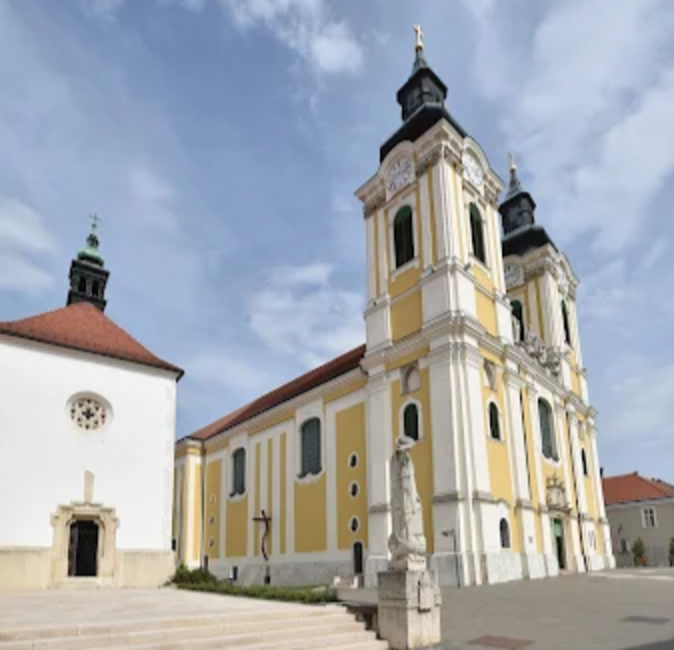
Side Facades and Surroundings
The church has flat wall panels, or wall mirrors, between symmetrical windows along its sides. The large windows in the shape of violins on the north and south facades really stand out. A statue of the city’s founder, Grand Duke Géza, designed by János Meszlényi can be found in the small square near the church’s southern side. A contemporary wooden crucifix and a memorial plaque honoring the 1956 revolution and independence war can be found on the northern side. The crypt’s entrance can be seen close to the square, just behind the sanctuary.
The Chapels
The Chapel of the Virgin Mary is located beneath the north portico of the cathedral, and the Chapel of St. Stephen. Within St. A marble replica of the reliquary that holds St. Stephen is located in Stephen’s chapel, which is in a niche on the back wall. Stephen’s head, which Gyula Szász made. On August 19, 1779, the chapel was dedicated, and the reliquary has been housed there ever since. On the altar, a beautiful red marble tabernacle stands proudly. A baptismal font made of red marble is in the Virgin Mary chapel.
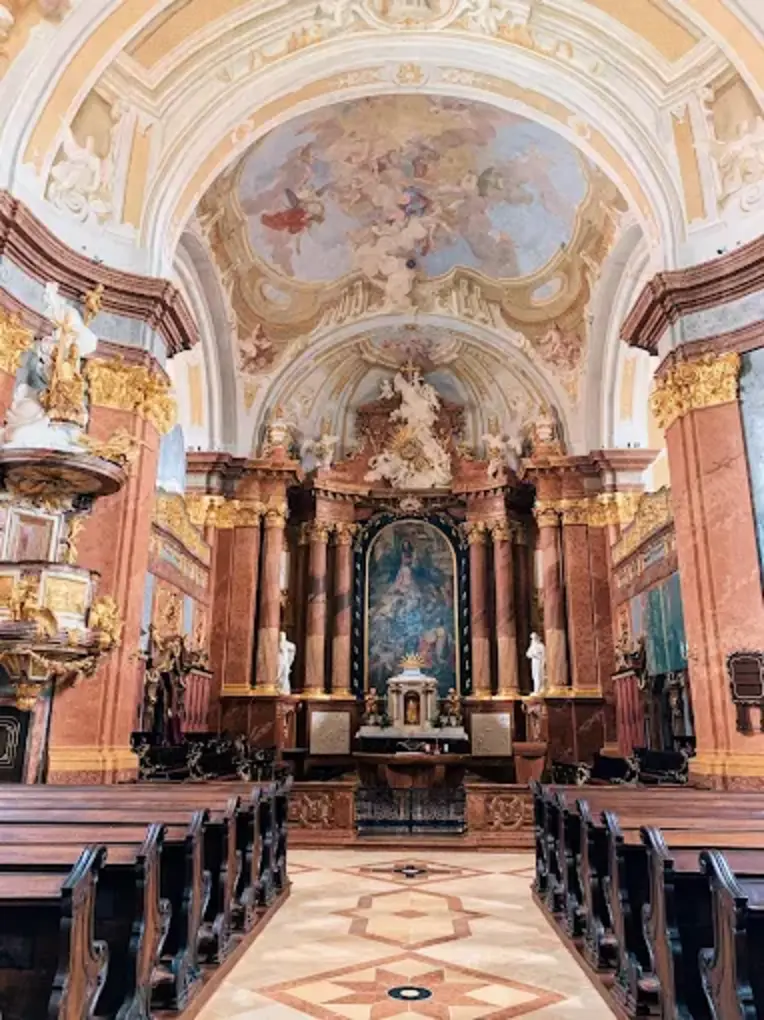
Inside the Sanctuary
The sanctuary is topped by sacristies on either side and open oratories above by a smooth, hemispherical dome. The high altar, which Queen Maria Theresa commissioned in 1775 and was designed by imperial architect Franz Anton Hillebrandt, is the most impressive feature here. Vinzenz Fischer’s main altar painting depicts Saint Stephen kneeling and offering the Hungary crown to the Virgin Mary. The carpenter Pál Schultz constructed the mensa, or base, of the altar in 1772. Angels are adoring the tabernacle all around it. The sanctuary and the nave are separated by a finely carved red marble railing made by Tata stonemason Georg Johann Mes.
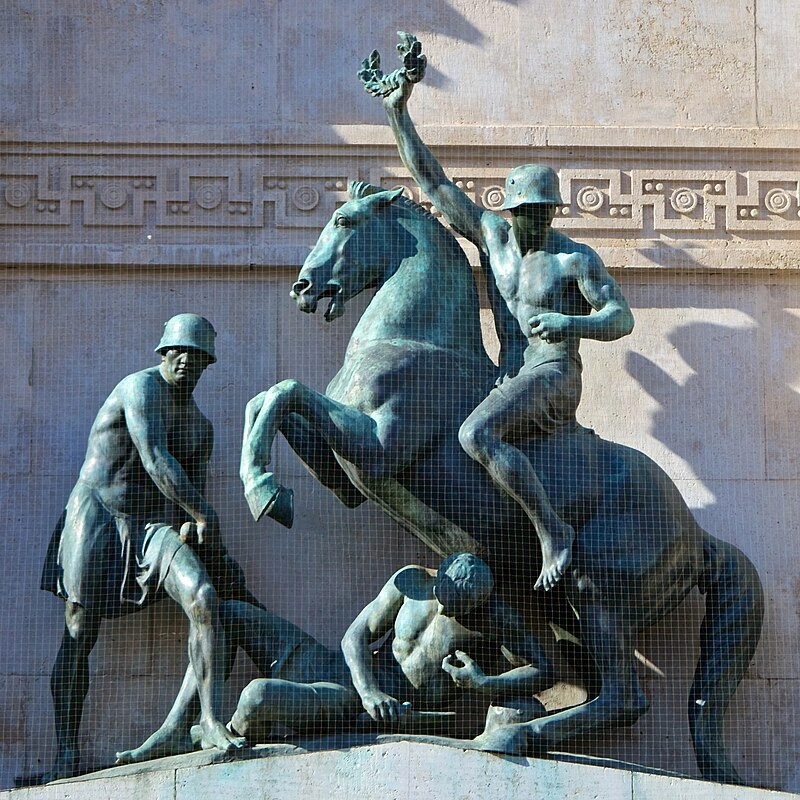
The Crypt
The majority of the bishops of Székesfehérvár rest in the crypt, which is beneath the basilica. It is also well-known for housing the marble urns of King Béla III and Queen Anna of Châtillon, his wife (some speculate that they are King Kálmán Könyves and Queen Felcia). The archaeologist Dr. discovered these coffins in 1848. Josés Erdy The fact that these are the only untouched coffins of the rpád kings makes this find extraordinary. The outlines of the bodies on the marble coffin bottoms were even preserved by chemical reactions during the decomposition. Following an order from King Franz Joseph, the king and queen’s remains were moved to the Matthias Church crypt in Buda in 1898. Because it went against the wishes of the king and queen, who wanted to be buried in Fehérvár, this action is criticized by many. Plans to return the royal couple to their original resting place in Székesfehérvár are currently being discussed.

Bells
There are three bells in the basilica’s towers.
In the north (left) tower The bell that belonged to King Béla III is 900 kg in weight and has a bottom diameter of 119 cm. It makes an F’ sound. Sándor Glóger’s workshop in Veszprém made this bell in 1855 out of parts from a Székesfehérvár 12th-century bell. The bell’s history can be found in the Latin inscription on it: it was first made in 1195, was buried during wars in 1545, was destroyed in 1725, was recast during a cholera epidemic in 1831, and was finally remade under King Francis in 1855. The basilica’s oldest bell, this is regarded as Sándor Glóger’s finest creation. It also chimes the hours, strikes the noon hour, and rings in the evenings during mass. St. Imre’s bell is smaller and plays a C” note. It weighs approximately 250 kg and has an 82.5 cm diameter. Ferenc Walser made it in Budapest in 1925. This bell chimes as a soul bell in the evenings and marks the quarter hour throughout the day.
In the south (right) tower:
The largest is the Prohászka Great Bell. It has a B° tone, is 169 cm in diameter, and weighs 2533 kg. It was created in Budapest in 1927 by Ferenc Walser Jr. and dedicated to the memory of Bishop Ottokár Prohászka, who passed away suddenly in April of that same year. On November 1, 1927, the bell began to chime. It was initially intended for the Prohászka Church, but due to the absence of a bell tower there, it ended up in the tower of the basilica instead. The inscription pays tribute to King St. and Bishop Prohászka. Stephen claims that the downtown parish, altar service, women’s groups, and congregations worked with God to create the bell. This is the largest bell in the Székesfehérvár diocese and the largest bell made by Ferenc Walser Jr. It only rings during special masses and church holidays.
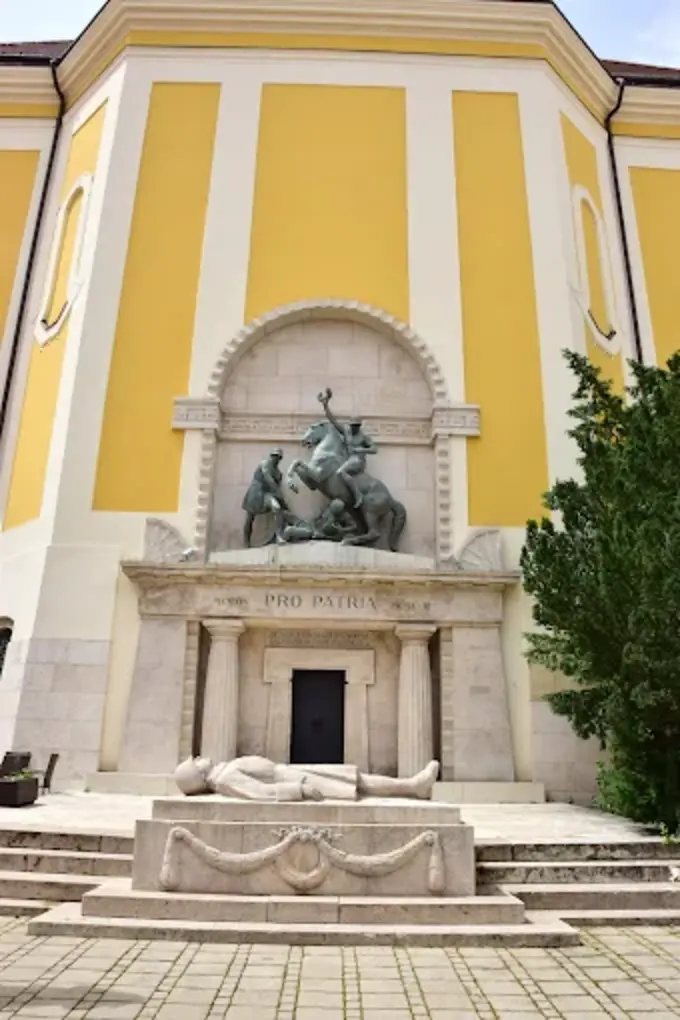
The Heroic Monument The memorial to those who gave their lives in the First World War is located close to the crypt entrance, behind the basilica. In 1927, the city of Székesfehérvár commissioned the work of sculptor János Pásztor and architect Rezs Hikisch. The winner of the competition was their design. In April 1929, the monument was completed and handed over, and it was officially unveiled that summer. Since then, on the first Sunday of May each year, a ceremony and service are held to honor the heroes. Heroes’ Square is the new name for the area behind the basilica.
Feast Day
Feast Day : 20 August
The Cathedral Basilica of St. Stephen the King in Székesfehérvár celebrates its feast day on August 20th every year. This day honors St. Stephen, who was the first king of Hungary and played a key role in establishing the country’s Christian kingdom. The feast is a significant event for the city and the basilica, with special masses and celebrations held to remember the legacy of the saint and the history of the church.
Church Mass Timing
Monday to Saturday : 04:30 PM
Sunday : 09:00 AM , 11:00 AM , 04:30 PM
Church Opening Time:
Monday : 6:00 PM
Thursday : 6:00 PM
Sunday : 10:30 AM, 7:00 PM
Contact Info
Address : Pannonhalma Archabbey
Székesfehérvár, Arany János u. 9, 8000 Hungary.
Phone : +36 22 315 114
Accommodations
Connectivities
Airway
Cathedral Basilica of St. Stephen the King, Székesfehérvár, Hungary, to Börgöndi repülőtér, distance 17 min (10.9 km) via Börgöndi út.
Railway
Cathedral Basilica of St. Stephen the King, Székesfehérvár, Hungary, to Székesfehérvár vasútállomás main train station, distance between 5 min (1.7 km) via Prohászka Ottokár út.

